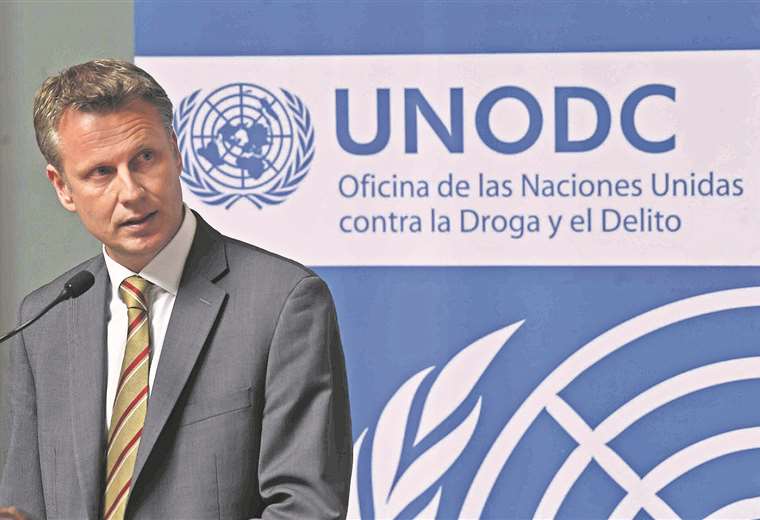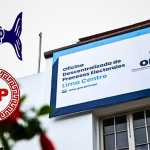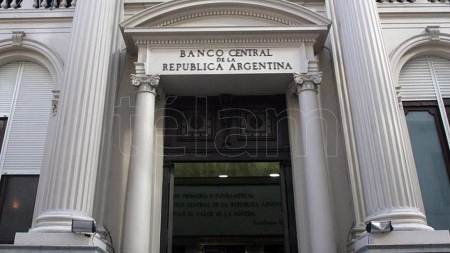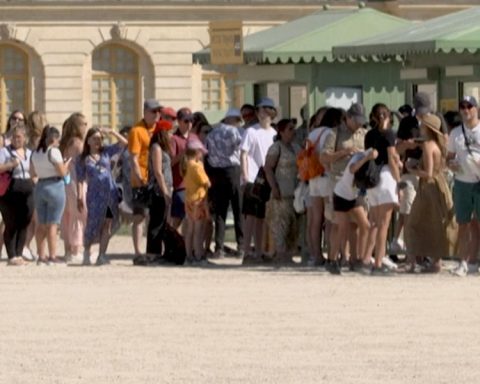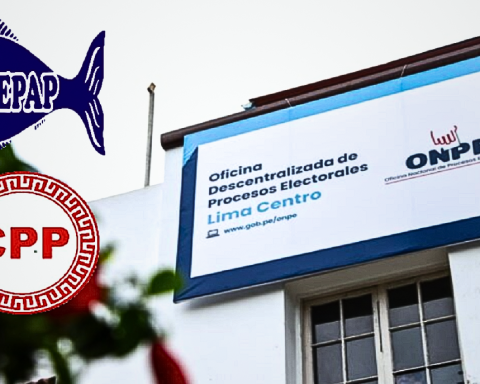November 30, 2022, 4:00 AM
November 30, 2022, 4:00 AM
The growth rate of coca crops fell from 15% to 4%, between 2020 and 2021, according to a report presented yesterday by the United Nations Office on Drugs and Crime (Unodc). In this way, the amount of cultivated area went, in this period, from 29,400 to 30,500 hectares and marked a trend not seen since 2010, when cocales totaled 31,000 hectares. The Government disagreed for the first time with the report and presented other data.
Of course, the last measurement presented yesterday shows that 8,500 hectares of coca are outside of Law 906, which admits up to 22,000 hectares. This standard has been in force since 2017, but since then none of the registries has been framed by the regulations.
“Bad news, since 2019 the surface of coca crops has been increasing and that has not changed, this trend continues, unfortunately, but, at a clearly slower rate, above all taking into account the regional context and the world context”, affirmed, yesterday before this scenario, the ambassador of the European Union (EU), Michael Dóczy.
The EU has financed the monitoring of coca plantations in Bolivia for 18 years. “We hope that Bolivia changes this trend and meets the objectives that have been self-imposed in their national policy.. I would like to remember that maximum figure of 22,000 hectares”, remarked the ambassador.
At the end of 2021, the EU authorized the disbursement of $us 101 million until 2024 in favor of Bolivia. Of that amount, $60 million are to fight drug trafficking. These funds are channeled as a counterpart to the “shared responsibility” between consumers and producers, the international principle against drug trafficking and related crimes.
But, the Minister of Government, Eduardo Del Castillo, said that, As a result of “field work” carried out by officials of the Vice Ministry of Social Defense, 29,200 hectares of coca crops were identified in the country.. These data reflect a trend towards the drop of 0.7% between 2020 and 2021. In any case, the indicator does not fit with the legal limit either.
The Unodc representative, Troels Vester, presented yesterday the report prepared by the international organization and which is based on images from satellites specialized in georeferencing, as well as data provided by the Government itself. He recalled that this was the first time, in the 18 previous reports presented by the United Nations, that the Government presents its own and differentiated data.
“In 2019 the increase was 10%, in 2020 15% and in 2021 4%”. In addition, “in 2020 there were 29,400 hectares, now we are at 30,500 hectares,” Vester specified in the report that arrived with a notorious delay, since these reports, with data from the previous year, are normally submitted between July and August of each year.
Furthermore, it was the first report that Vester submitted on his mission. The diplomat arrived in the country this year and his public appearances have been rare and only during formal meetings with the Government.
In 2013, the EU also financed a study to establish the amount of coca required to satisfy domestic legal demand, be it for ritual or medicinal use, and set a maximum indicator of 14,700 hectares for that market.. Until then, the legal limit was 12,000 hectares, according to the old Law 1008. The norm was reformed and the majority of the MAS in the Legislature set the limit at 22,000 hectares that has been in force since 2017.
According to the report presented yesterday, crops in Yungas increased by 2%, which implies 454 hectares; in the Cochabamba Tropics, 664 more hectares (6%) were detected; and in the north of La Paz, where cultivation is prohibited, it was reduced by up to 9%.
In the case of the Cochabamba tropics, up to one cato (1,600 square meters) of the bush can be produced per family, and in Yungas the traditional area prevails.
According to the reports of Unodc, andhe movement of legal coca in La Paz was basically centralized in Villa Fátima, which concentrated 92% of the transactions. In the last two years, there have been tensions over control of the coca market whose main market is Santa Cruz. The rest is Sacaba, where the coca grown in the Cochabamba tropics, the MAS stronghold, arrives.
In any case, The report of this year’s international organization highlights that the area cultivated with coca in the country is “stable and contained.”after the promotions that have been registered since 2019.
Regarding protected areas, the report mentions a reduction of 0.4%. In the Isiboro Sécure coca was reduced by -19% and -72% in the Amboró park, but there were increases of 17% in the Carrasco park (Cochabamba); 42%, 17% and 10% in Cotapata, Apolobamba and Madidi, protected areas in La Paz.
Regarding the figures for the eradication of excess illegal coca, monitoring certifies the elimination of 9,458 hectares, which represents an increase of 334% compared to 2020, the first year of the coronavirus pandemic that involved the confinement and halting of various activities.
President Luis Arce inaugurated on March 10 the annual campaign for the elimination of illegal coca and the “rationalization” of these crops in areas where Coca Law 906 and Decree 3318 do not allow it. This year’s goal is to overcome the eradication of 9,000 hectares of illegal coca.
Given this scenario, Troels Vester advised to launch comprehensive development projects, reach commercial agreements for the reactivation of the rural area, pay attention to the risks that synthetic drugs represent and update parameters “in the methodology of interpretation of the measurement of coca crops”.
